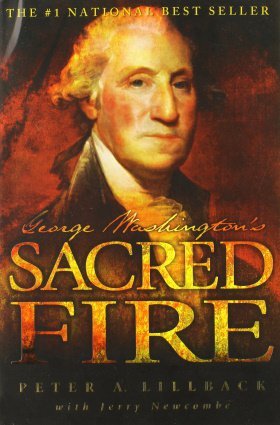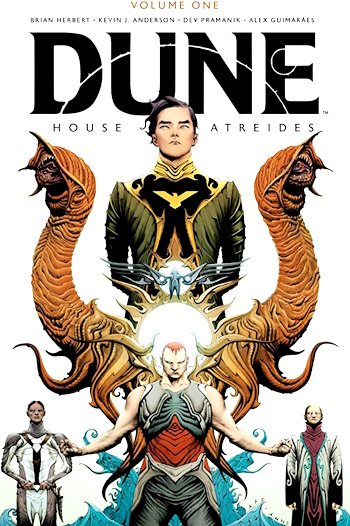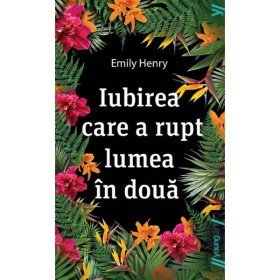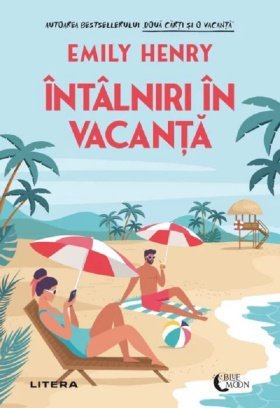3 See the previous chapter, “Did Washington Take Communion?”
4 Littell, George Washington: Christian. Boller writes in George Washington & Religion, pp. 33-34 “In 1835, Bishop White, in answer to Colonel Hugh Mercer’s question as to “whether General Washington was a regular communicant in the Episcopal Church in Philadelphia,” replied: “In regard to the subject of your inquiry, truth requires me to say, that General Washington never received the communion, in the churches of which I am parochial minister. Mrs. Washington was an habitual communicant.”
5 Ibid., p.16.
6 Ibid., pp. 17-18.
7 Ibid., p. 33-34. Dr. James Abercrombie to Origen Bacheler, November 29, 1831, Magazine of American History, XIII (June, 1885), p. 597.
8 Ibid., pp. 33-34, writes “On communion Sundays,” according to Mrs. Custis, “he left the church with me, after the blessing, and returned home, and we sent the carriage back for my grandmother.” This comes from the letter of Nelly Custis to Jared Sparks. Nelly Custis to Jared Sparks in The Writings of George Washington (New York: Harper & Brothers, 1847), vol. XII, pp. 405-408. This can also be found in Johnson, George Washington the Christian, pp. 242-245 and Eidsmoe, Christianity and the Constitution, p. 141.
9 Ibid., p. 33.
10 The Book Of Common Prayer that I have in front of me for this page count is the 1662 edition printed in Oxford by Thomas Baskett, Printer to the University in 1751.
11 This can also be found in Johnson, George Washington the Christian, pp. 242-245 and Eidsmoe, Christianity and the Constitution, p. 141.
12 Nelly Custis to Jared Sparks in The Writings of George Washington, vol. XII, pp. 405-408.
13 Boller, George Washington & Religion, pp. 34-35.
14 Mrs. Alexander Hamilton Witnesses?? that George Washington Was A Communicant of the Church, p. 3. This testimony, however, was not limited to Mrs. Hamilton’s clergyman great-grandson. She also communicated the same facts to General Schuyler Hamilton, who said, “I have it on the absolute authority of my great-grand-mother (Mrs. Alexander Hamilton, 1st.) that George Washington communed in the Episcopal Church; that is sufficient for me, as my great-grand-mother would not have said so unless it was a fact known to her by personal observation.” Ibid., p. 6. The editor of the text adds, “Practically every fact mentioned by Mrs. Hamilton, other than the Service of Holy Communion at St. Paul’s Chapel, is recorded by contemporaneous writers. Mrs. Washington was not at the Inaugural, Washington rode away from Mount Vernon with only two attendants, the Inauguration was at Federal Hall, the procession did walk instead of riding from Wall Street to Fulton; the Service was at St. Paul’s instead of Trinity because Trinity Church had been burned and not yet rebuilt; and Bishop Provoost was Rector of Trinity Parish, of which St. Paul’s was a chapel, as well as Bishop of New York, and so was rightly called ‘the rector’ by Mrs. Hamilton. In the perfect pattern recorded in historical works only one item is missing, the Holy Communion with Washington and his friends as communicants, and that was supplied by Mrs. Alexander Hamilton in the vivid and distinctive conversation reported by her great-grandson.”, pp. 5-6.
15 Littell, George Washington.
16 “For example: WGW, vol. 2, 4-27-1763. To Robert Stewart. “On my honor and the faith of a Christian.” WGW, vol. 29, 2-11-1788. To Benjamin Lincoln. “...our Religion holds out to us such hopes as will, upon proper reflection, enable us to bear with fortitude the most calamitous incidents of life....” WGW, vol. 26, 6-8-1783. “... the Divine Author of our blessed Religion....” WGW, vol. 11, 5-2-1778. “While we are zealously performing the duties of good Citizens and soldiers we certainly ought not to be inattentive to the higher duties of Religion. To the distinguished Character of Patriot, it should be our highest Glory to add the more distinguished Character of Christian.”
17 Ibid., vol. 30, 9-28-1789. To Reverend Samuel Langdon, “The man must be bad indeed who can look upon the events of the American Revolution without feeling the warmest gratitude towards the great Author of the Universe whose divine interposition was so frequently manifested in our behalf. And it is my earnest prayer that we may so conduct ourselves as to merit a continuance of those blessings ....” Ibid., vol. 12, 8-20-1778. To Brig. Gen. Thomas Nelson. “The hand of Providence has been so conspicuous in all this, that he must be worse than an infidel that lacks faith, and more than wicked, that has not gratitude enough to acknowledge his obligations, but, it will be time enough for me to turn preacher, when my present appointment ceases; and therefore, I shall add no more on the Doctrine of Providence.”
18 Ibid., vol. 35, 9-19-1796. Farewell Address.
19 See the chapter on “George Washington and the Bible.”
20 See the chapter entitled, “George Washington’s God: Religion, Reason and Philosophy”.
21 See the chapter entitled, “Did Washington Avoid the Name of Jesus Christ?”
22 See his first Thanksgiving Proclamation in 1789.
23 See the chapters entitled, “George Washington’s Christian Worldview”, “The Gospel According to George Washington.”
24 See the chapters entitled, “Washington’s Virginia and the Anglican Mission to the Indians.”
25 See the chapter entitled, “George Washington on Heaven and Eternal Life.”
26 See the chapter on “The Sacred Fire of Liberty.”
27 See the chapter on “George Washington’s Clergy and Their Sermons.”
28 See the chapter on “George Washington’s Sermons.”
29 WGW, vol.35, 9-19-1796. Farewell Address; WGW, vol.30, 10-29-1789. To the First Presbytery of the Eastward. See the chapter on “The Spirituality of George Washington.”
Nelly Custis to Jared Sparks in The Writings of George Washington, vol. XII, pp. 405-408.
CHAPTER 22
1 Jackson, Twohig, Diaries of George Washington.(Monday October, 10, 1785).
2 J. I. Good, History of the German Reformed Church in the United States, 1725-1792 (Reading, Pennsylvania, 1899), pp. 616-617. WGW, vol. 33, 9-30-1793, note: “The house occupied by Washington in Germantown is stated by W. S. Baker to have been owned by Col. Isaac Franks. It was on Germantown Avenue, about 6 miles northwest of Independence Hall, in Philadelphia. Reverend J. B. Stoudt states that the President occupied the first floor of Reverend Lebrecht Herman’s parsonage as an office.”
3 WGW, vol. 32, 7-3-1792. To Governor Henry Lee. “Dear Sir: Your letter of the 20th. Ulto.?? was presented to me yesterday by Mr. Williams, [William J. Williams] who, as a professional man, may, or may not be, a luminary of the first magnitude for aught I know to the contrary. But to be frank, and I hope you will not be displeased with me for being so, I am so heartily tired of the attendance which, from one cause or another, I have bestowed on these kind of people, that it is now more than two years since I have resolved to sit no more for any of them; and have adhered to it; except in instances where it has been requested by public bodies, or for a particular purpose (not of the Painters) and could not, without offence, be refused. [WGW note: The portrait was not executed until September, 1794, in Philadelphia. Having been refused a sitting at the above time, Williams offered the Masonic Lodge No. 22 of Alexandria the finished work, if the lodge would request him to make a portrait. The lodge approved this idea Aug. 29, 1793. The resultant portrait was executed in pastel, and is now in the possession of the lodge.] I have been led to make this resolution for another reason besides the irksomeness of sitting, and the time I loose by it, which is, that these productions have, in my estimation, been made use of as a sort of tax upon individuals, by being engraved, and that badly, and hawked, or advertised for Sale. With very great Esteem and regard I am &c.”
4 Jackson, Twohig, Diaries of George Washington (Monday October, 10, 1785)
5 Washington had in his library another anonymous work by Reverend Samuel Seabury: Free Thoughts, on the Proceedings of the Continental Congress, held at Philadelphia, Sept. 5, 1774; wherein their Errors are exhibited, their Reasonings confuted, and the fatal Tendency of their Non-Importation, Non-Exportation, and Non-Consumption Measures, are laid open to the plainest Understandings; and the only Means pointed out for preserving and securing our present happy Constitution: in a Letter to the Farmers, and other Inhabitants of North America in general, and to those of the Province of New-York in particular. By a Farmer. Lane in A Catalogue of the Washington Collection, pp. 177-78 writes, “Prior to this, the colonial interests had been discussed in two pamphlets printed without the name of author or publisher, and one of them, entitled, ‘Free thoughts on the Proceedings of the Continental Congress’ was signed ‘A. W. Farmer,’ and attributed at the time and since to Isaac Wilkins, then an influential member of the loyal Provincial Assembly of New York, and an intimate friend of the rector of the church in Westchester.... A bitter feeling was excited towards the unknown author of these pamphlets, which were extensively and gratuitously circulated among the people of New York and other provinces. Vengeance was denounced upon him, and failing to find him, copies of the pamphlets were gathered and brunt, and in some instances they were tarred, feathered, and nailed to the whipping-post, as an indication of the treatment which their author would receive if he were detected.... But who was the spirited writer that signed himself ‘A. W. Farmer’? Seabury at an earlier day, had entered into a compact with his clerical friends, Dr. Chandler of New Jersey, and Dr. Inglis, rector of Trinity Church, New York, to watch and confute all publications in pamphlets or newspapers that threatened mischief to the Church of England and the British government in America. Out of this compact undoubtedly sprung ‘Free Thoughts on the Proceedings of the Congress at Philadelphia,’ which was from his pen, as were the other publications that immediately followed on the same side of the question.” Beardsley. Life and Correspondence of Samuel Seabury, D.D. the task of defending the cause of the colonies against the attacks of “A.W. Farmer” was confided to Alexander Hamilton, then a youth of eighteen, about to close his studies at King’s College.”
6 Notes from A Revolution That Led To A Church by F. Lee Richards (Cincinnati: Forward Movement Publications, 1990). “The break with England seriously impacted the Anglican Church. The revolution caused the loss of half the clergy, meaning many rural churches had to close.
With peace in 1783, a process to rebuild the Church began, which reached its climax in 1789. Journal of the Proceedings of the Bishops, Clergy and Laity, of the Protestant Episcopal Church in the United States of America in a Convention held in the City of Philadelphia, from Tuesday, September 29th to Friday, October 16th, 1789 Printed in Philadelphia: by Hall and Sellers in 1790.
7 From note in Diaries of Washington. “John Lowe (1750—1798), a minor Scottish poet, was born in the Galloway district of Scotland and educated at the University of Edinburgh. He came to Virginia in 1772 and became a tutor in the family of John Augustine Washington. He later ran an academy in Fredericksburg attended by Fielding Lewis’s children. After his ordination at St. George’s Church, Hempstead, Long Island, he became minister at Hanover Parish in King George County, Va.”
8 WGW, vol. 32, 10-20-1792. To Dr. William Davies Shipley.
9 Ibid., vol. 37, last Will and testament.
10 This occurred in Scotland by “non-juror” bishops. To be a “non-juror,” as we have already noted, meant that such a bishop was one who had not taken an oath of loyalty to William and Mary, the Protestant monarchs of the House of Orange. who ascended to the English throne in 1688. concluding the “Glorious Revolution.” What were the principles of the non-jurors? Thomas Lathbury, A History of the Nonjurors: Their Controversies and Writings; With Remarks on Some of the Rubrics in the Book of Common Prayer (London: William Pickering, 1845), pp. 419-20, says, “As William supported Presbytery in Scotland, because the Episcopalians refused to recognize him as their Sovereign, the Presbyterians have no room for boasting that their system was adopted in preference to Episcopacy. It certainly was not chosen on account of its purity, as they choose to imagine or to assert, but because King William found them more ready to render him their support, than the Bishops and Clergy. Whether the refusal of the latter was a blot upon their memory, posterity will decide. At all events, they were honest in their course, for it led to the loss of all their worldly goods. The bishop of Edinburgh’s reply was frank and open. He had not expected any such Revolution, and he had the courage to say so. Perceiving that the Bishops and Clergy would not support him, the King threw himself into the arms of the Presbyterians.” He adds on pp. 423-24, “All the Clergy, who refused to take the Oath of Allegiance to the new Sovereigns, were removed from their Parishes; and “from their refusal, they soon acquired the appellation of Nonjurors.”. . . Such Episcopal Clergymen as took the Oath of Allegiance, and acknowledged Presbytery as the only legal establishment, were allowed by the State to retain their churches, and also to be admitted, with the Presbyterian clergy, to a share in the Ecclesiastical government. To assent to Presbytery, as established by law, did not involve any opinion respecting its Scriptural or primitive character, which no Episcopalian could possibly admit. Besides, as no form of Prayer was imposed by the Presbyterians, the Clergy could proceed in the management of public worship, nearly in the same manner as previous to the Revolution. Accordingly a considerable number of the Episcopal Clergy complied, and continued in their respective Parishes.”

























